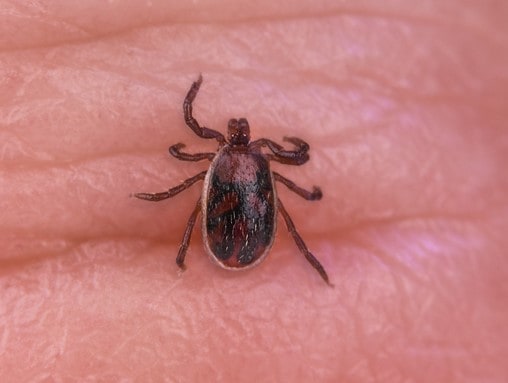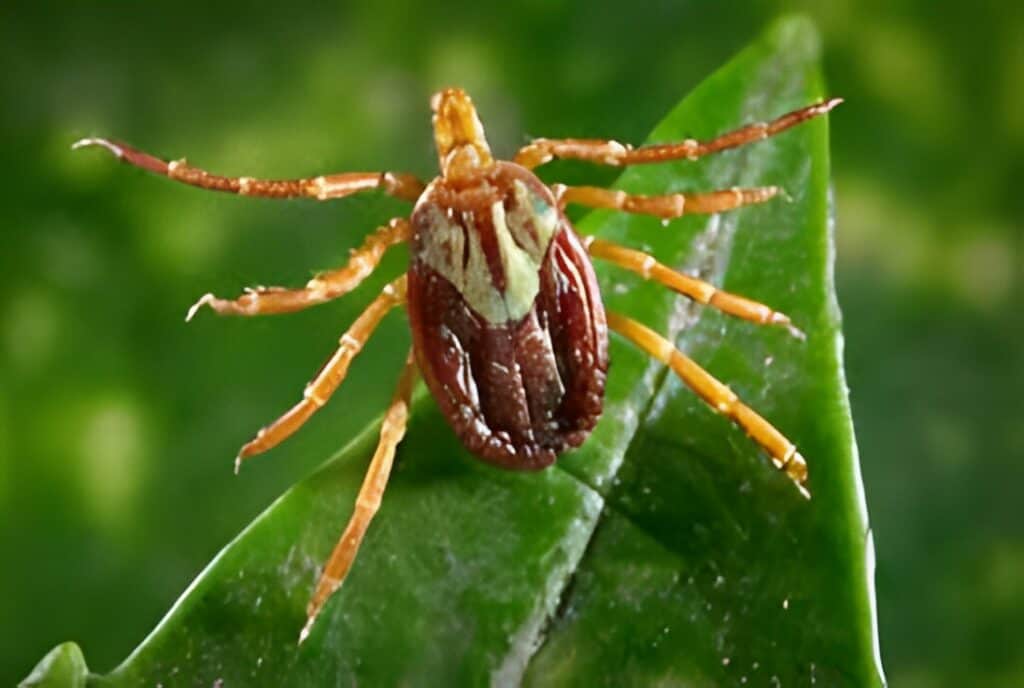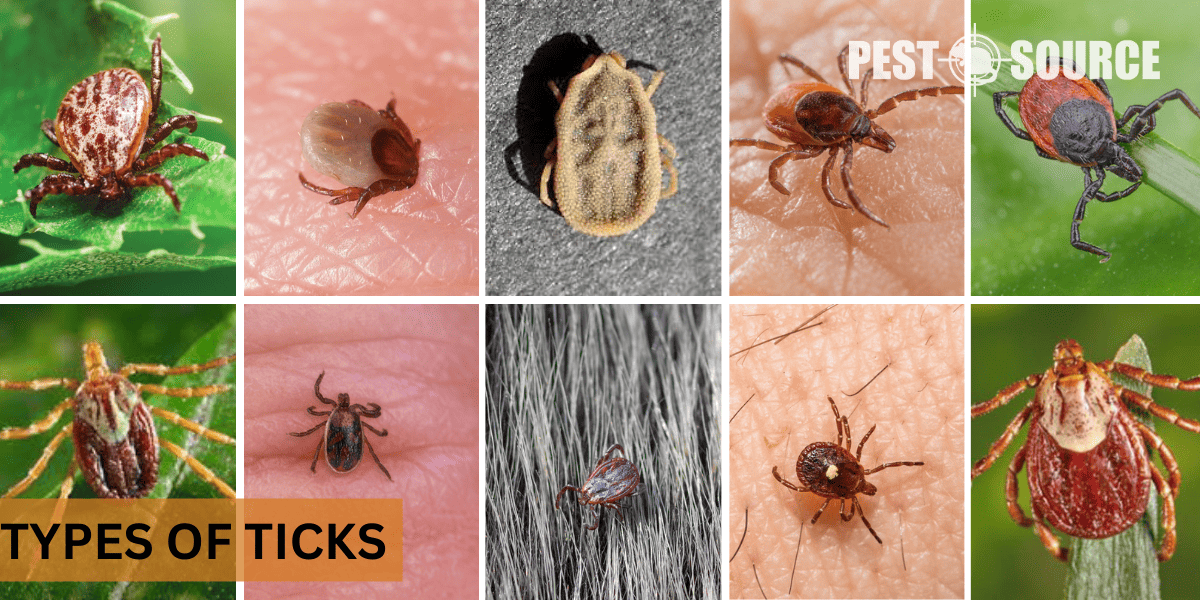Welcome to your all-in-one guide about the tiny, yet somewhat troubling world of ticks. Though small in size, ticks are well-known for spreading several diseases to humans and animals alike. This article serves as a vast resource about different types of ticks, their biology, how to identify them, and methods to control them. Armed with this knowledge, you can better manage these little pests and maintain a tick-free life. Ready to learn more about ticks and their world? Let’s get started!
POINTS
- Ticks, small arachnids belonging to the order Parasitiformes, are categorized into hard and soft types. They survive as ectoparasites, feeding on the blood of various host creatures.
- Different species of ticks can be identified based on their distinct features, such as color, size, body shape, and location. Popular ones include the Black-legged tick, American Dog tick, Brown Dog tick, and Lone Star tick among others.
- Hard ticks like the Ixodidae are distinguishable by a rigid, platelike structure known as the scutum, and soft ticks, or Argasidae, lack this hard back enclosure.
- Ticks pose significant health risks to humans and animals due to their ability to transmit diseases. Notorious ones include Lyme disease, Rocky Mountain spotted fever, tularemia, and ehrlichiosis.
- Identification of ticks is essential for their control and prevention, and the effective prevention of tick-borne diseases largely depends on understanding the various tick species, their preferred habitats, and the diseases they can potentially transmit.
What is a Tick?
Ticks are small arachnids belonging to the order Parasitiformes. These creatures can be divided into two primary families: Ixodidae (hard ticks) and Argasidae (soft ticks). As ectoparasites, they adopt a lifestyle that involves feeding on the blood of various host creatures, including mammals, birds, and occasionally reptiles and amphibians.
What are ticks, and what is their basic biology?
Ticks are external parasites, surviving by sucking blood from a wide range of host species. In terms of their biology, these arachnids have a complex life cycle involving four stages: egg, larva, nymph, and adult. Depending on their type, ticks can take up to three years to undergo a complete life cycle.
What are the main families of ticks?
The main families of ticks are the Ixodidae or hard ticks, and the Argasidae or soft ticks. The former are known for their tough backplates, while the latter lack this characteristic shell.
How do ticks feed and survive?
Ticks feed by inserting their mouthparts into the skin of a host and drawing out blood. This feeding, paired with occasional mating on the host’s body, enables them to survive and reproduce. It’s crucial to note that some ticks can go months or even years without feeding, depending on their stage of life and environmental conditions.
Why are ticks significant to human health?
Ticks are significant to human health due to their capacity to transmit diseases. When they feed, ticks can pass pathogens, such as bacteria and viruses, from their saliva into the host, causing a variety of illnesses such as Lyme disease and Rocky Mountain spotted fever.
How to Identify Ticks: Features, Size and Colors?
Proper identification of ticks is crucial to accurately assess potential risks of disease transmission. Knowing what a tick looks like, its color variations, size range, and how its appearance can inform us about its species is essential.
What does a tick look like?
As members of the arachnid family, ticks have a total of eight legs in their adult form. They possess a flat and oval-shaped body that becomes more swollen and elongated after they feed. Most ticks also have a protective shield, or scutum, located behind their mouthparts.
How do the colors of ticks vary?
The colors of ticks can vary significantly among different species, ranging from pale to dark brown, while some species may have a reddish-brown or black hue. Also, ticks may change color slightly after feeding.
What is the size range of ticks?
Ticks can be as small as a pin’s head (about 1 mm) in their larval state, growing larger with each life stage. Adult ticks typically range from roughly 3 to 5 mm when unfed but can swell up to 1 cm once engorged with a blood meal.
How can the appearance of a tick inform us about its species?
Different tick species will have distinct morphological features, such as variable color patterns, body shapes, and sizes. The presence or absence of a scutum, the body’s overall shape, and the coloration can all aid in distinguishing different species.
Moreover, the length and form of the mouthparts can provide valuable clues to the tick’s species and gender. For instance, the black-legged tick, which is notorious for spreading Lyme disease, has long, thin mouthparts relative to other ticks. By contrast, the Lone Star tick’s mouthparts are shorter and broader. Understanding these differences aids in accurate identification.
How Many Types of Ticks are There?
The world is home to an incredibly diverse assortment of tick species, each with unique characteristics and effects on host species including humans.
What is the number of known tick species?
There are over 800 known species of ticks worldwide. These ticks are divided into three families – Ixodidae (hard ticks), Argasidae (soft ticks), and Nuttalliellidae, which contains a single species.
What are some of the most common types of ticks found globally?
Some common and medically significant tick species include Black-legged ticks (Ixodes scapularis), American Dog ticks (Dermacentor variabilis), Brown Dog ticks (Rhipicephalus sanguineus), Lone Star ticks (Amblyomma americanum), and Gulf Coast ticks (Amblyomma maculatum).
Are there distinct features that help identify different types of ticks?
Yes, each type of tick possesses distinct features that aid in their identification. These may include variations in color, size, body shape, and detailed structural attributes like mouthparts and leg segments. The known geographical distribution of tick species can also aid in their identification.
For example, the Lone Star tick is identifiable by the single white dot or “lone star” on the back of adult females, while the Black-legged tick, is notable for its uniformly dark body. This ability to identify different ticks could be crucial in disease prevention, as some ticks are more likely to carry certain illnesses than others.
Understanding the Variety: Different Types of Ticks
Hard ticks and soft ticks constitute the two major categories, each further housing a diverse array of tick species. Here, we’ll delve into the unique features of different hard tick species and provide a brief overview of soft ticks.
Exploring Hard Ticks (Ixodidae): An Array of Species
One of the two major classifications of ticks includes the Ixodidae, or hard ticks. Distinguishable by a rigid, plate-like structure known as the scutum, hard ticks include several species worth noting due to their interaction with humans and pets.
Black-legged Tick (Ixodes scapularis)

The black-legged tick, often referred to as the deer tick, holds a notorious reputation for being a primary carrier of Lyme disease. This wellness-threatening condition can cause a wide range of symptoms in humans. Typically, individuals infected with Lyme disease may experience flu-like conditions such as fever, chills, and body aches. If it’s not timely detected and treated, the disease could potentially lead to more severe complications including heart issues and neurological disorders.
Visually distinguishing the black-legged ticks is relatively straightforward due to their characteristic dark color and modest size. An interesting, specific feature to note about female ticks is the remarkable transformation in their abdomen – from a standard dark to a unique reddish hue – post-consuming a blood meal. This change makes them more identifiable to the naked eye. Awareness about their distinct traits and their association with Lyme disease is critical for effective pest prevention and control.
American Dog Tick (Dermacentor variabilis)

The American Dog Tick, scientifically known as Dermacentor variabilis, is a significant vector of two noteworthy illnesses – Rocky Mountain spotted fever and tularemia. These specific pests, renowned as cogent transmitters of these afflictions, can possibly pose serious health risks. Rocky Mountain spotted fever typically manifests as a sudden onset of fever and headache, whereas tularemia is known for its potentially severe and sometimes fatal outcomes.
Aesthetically, these ticks are primarily brown and often feature distinct, greyish-white markings or patterns on their bodies. This unique coloration serves as a helpful identifier.
Brown Dog Tick (Rhipicephalus sanguineus)

The Brown Dog Tick, scientifically classified as Rhipicephalus sanguineus, is a pest of considerable concern for our canine companions. These particular ticks are notorious for transmitting harmful diseases such as canine ehrlichiosis and babesiosis, both of which can adversely impact a dog’s health with symptoms ranging from lethargy and loss of appetite to more serious complications like anemia and kidney failure.
These ticks have a unique inclination for indoor spaces, resulting in their rather fitting moniker as a true “house tick.” The Brown Dog Tick’s residential preference combined with its potential to plague pets with serious diseases underlines the necessity of rigorous pest control and prevention efforts in domestic settings.
Lone Star Tick (Amblyomma americanum)

Recognizable by a singular silvery-white spot prominently displayed on the females’ back, the Lone Star Tick, or Amblyomma americanum, is attributed to the spread of certain health-compromising diseases. Specifically, ehrlichiosis, STARI (Southern Tick-Associated Rash Illness), and tularemia are contracted from these ticks. These diseases present varying symptoms from mild rashes and flu-like symptoms to severe conditions requiring immediate medical attention.
The distinctive spot, reminiscent of a ‘lone star’, gives this species an identifying mark, making it more recognizable for the common observer.
Gulf Coast Tick (Amblyomma maculatum)

The Gulf Coast Tick, referred to scientifically as Amblyomma maculatum, is primarily prevalent in the southeastern regions of the U.S. They are particularly notorious for transmitting Rickettsia parkeri rickettsiosis, a variant of the spotted fever. This condition carries symptoms that resemble typical fever-based diseases – including fever, headache, and rash – yet has the potential to develop into more severe complications if not promptly addressed.
Despite being a regional specific tick, the Gulf Coast Tick’s notable capacity to spread a form of spotted fever underscores the importance of not underestimating the potential health risks, even in more localized or specific tick species.
Rocky Mountain Wood Tick (Dermacentor andersoni)

Somewhat limiting their habitat to the Rocky Mountain states, the Rocky Mountain Wood Tick, also known as Dermacentor andersoni, is an important carrier of several concerning diseases. Quite notably, they are responsible for transmitting ailments including but not limited to Rocky Mountain spotted fever, Colorado tick fever, and tularemia. These illnesses can manifest in several ways, with symptoms ranging from fever and fatigue to severe muscle aches and potential complications if left untreated.
Pacific Coast Tick (Dermacentor occidentalis)

The Pacific Coast Tick, classified scientifically as Dermacentor occidentalis, is largely endemic to the western regions of the U.S. This specific species carries significant maladies like Rocky Mountain spotted fever and tularemia, contributing to overall public health concerns. These illnesses can cause uncomfortable symptoms, including high fever, headache, and fatigue. Without timely medical intervention, these ailments can develop into severe complications, emphasizing the ticks’ health threat.
Western Black-legged Tick (Ixodes pacificus)

The Western Black-legged Tick, scientifically known as Ixodes pacificus, predominantly resides in the Pacific states of the U.S. This species shares a close relation with the notorious black-legged tick and, much like its counterpart, is a known transmitter of Lyme disease and anaplasmosis. These diseases have the capacity to cause a wide range of symptoms including fever, fatigue, headache, muscle and joint aches, and swollen lymph nodes.
Groundhog Tick (Ixodes cookei)

The Groundhog Tick, also known by its scientific classification Ixodes cookei, is primarily a North American species and specifically infests mammals such as groundhogs.
However, they’re not exclusive to wildlife and can also bite humans and pets. Of particular concern is their capacity to transmit the Powassan virus, a serious disease that can lead to severe neurological problems. Though instances of this virus are rare, it underscores the need for preventative pest control measures, especially in regions known for groundhogs.
Soft Ticks (Argasidae): The Lesser-Known Variety

Soft ticks, categorized under the family Argasidae, are generally rounder and smaller than hard ticks. As they lack the characteristic hard back-plate or scutum found in hard ticks, it is easier for soft ticks to expand significantly while feeding. Species in this category, like Ornithodoros, can transmit diseases, including the relapsing fever. Their feeding habits are also unique as they typically feed multiple times during each life stage.
How to Identify Ticks on Dogs?
It’s not just humans who are at risk from ticks. Our four-legged companions also face threats from various tick species.
What types of ticks are commonly found on dogs?
The most common ticks found on dogs include the American Dog Tick, Brown Dog Tick, and the Lone Star Tick.
How to identify ticks on dogs?
To identify ticks on dogs, check your pet thoroughly after it has been outdoor, particularly in areas with high grass or brush. Pay close attention to the dog’s ears, neck, skin folds, and other hiding spots where ticks can attach themselves.
What diseases can ticks transmit to dogs?
Ticks can transmit several diseases to dogs, most notably Lyme disease, ehrlichiosis, and Anaplasmosis. These can cause various symptoms in dogs, including fever, loss of appetite, lameness, and fatigue among others.
How to prevent ticks on dogs?
Tick prevention in dogs includes using tick control products, keeping your yard tidy, checking your dogs for ticks after they’ve been outdoor, and maintaining vet visits. It’s important to speak with a veterinarian to discuss the best methods for your pet.
What are the Visual Characteristics of Different Types of Ticks?
It’s crucial to understand the visual characteristics of various tick species as this aids immensely in their identification.
How do the colors of different tick species vary?
The color of ticks can be diverse and is often helpful in species identification. You’ll find ticks in shades ranging from yellowish-brown to black. Some species may have specific color characteristics, such as the black-legged tick which is a darker hue, or the lone star tick which has a single white spot on the females. What are the typical sizes of different tick species?
The size of ticks can vary depending on the species and their life stage. Generally, adult ticks are larger than the young ones (nymphs and larvae). Unfed adult ticks can be as small as a sesame seed (2-3 mm), while engorged ones may swell up to the size of a pea (1 cm).
Are there ticks with distinct visual characteristics?
Yes, several ticks have distinct visual traits that set them apart. For instance, the lone star tick is named for the prominent single white spot on the back of females. Red ticks refer not to a specific species, but to ticks in the process of feeding, during which they enlarge and turn redder.
How Are Ticks Related to Diseases?
Ticks are vectors for several pathogens causing diseases in humans and animals.
Which ticks are notorious for transmitting diseases?
Numerous tick varieties are infamous disease-carriers. The black-legged (deer) tick is notorious for spreading Lyme disease, while the American Dog tick and Rocky Mountain wood tick are primary vectors for Rocky Mountain spotted fever.
What diseases can be carried by different types of ticks?
Ticks can potentially transmit various diseases, including Lyme disease, Rocky Mountain spotted fever, tularemia, ehrlichiosis, and more. Each tick species may carry different pathogens, contributing to the spread of specific diseases.
How can one identify ticks that carry Lyme disease?
Ticks that carry Lyme disease include the black-legged tick (or deer tick) and the western black-legged tick. They are small, dark ticks, and nymphs may be as small as a poppy seed.
What precautions can be taken to avoid tick bites?
The best way to prevent tick bites is to avoid their habitats such as tall grass or brushy areas. Use tick repellents, wear long pants and sleeves while hiking or camping, and check yourself and pets for ticks after being outdoors. Remove any tick found on your body promptly and correctly.
Conclusion: The Importance of Tick Identification
Ticks are tiny but can pose significant health risks due to their ability to transmit diseases. Being able to identify them, being aware of the diseases they can carry, and knowing how to prevent tick bites are all critical for both personal and public health safety.



